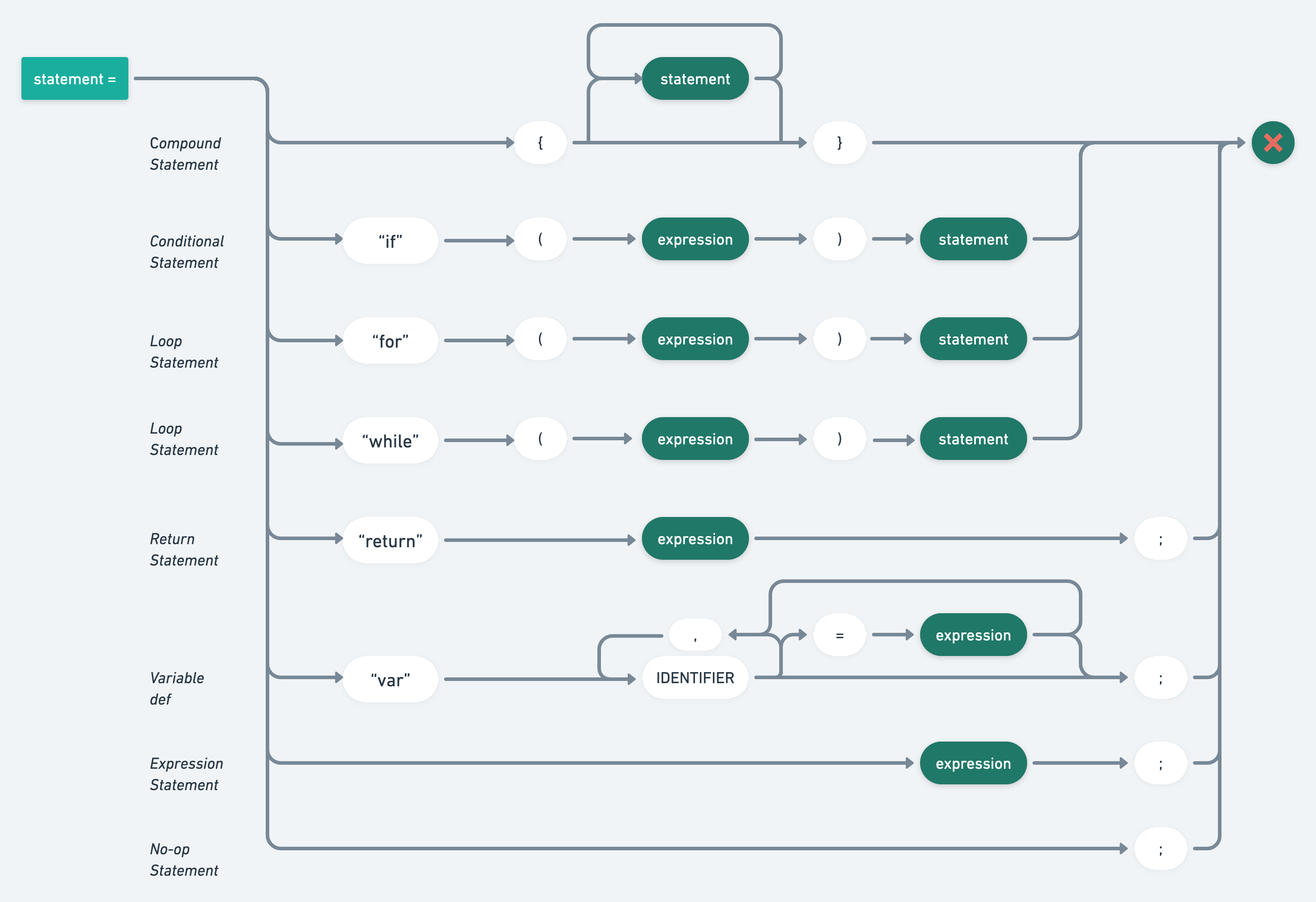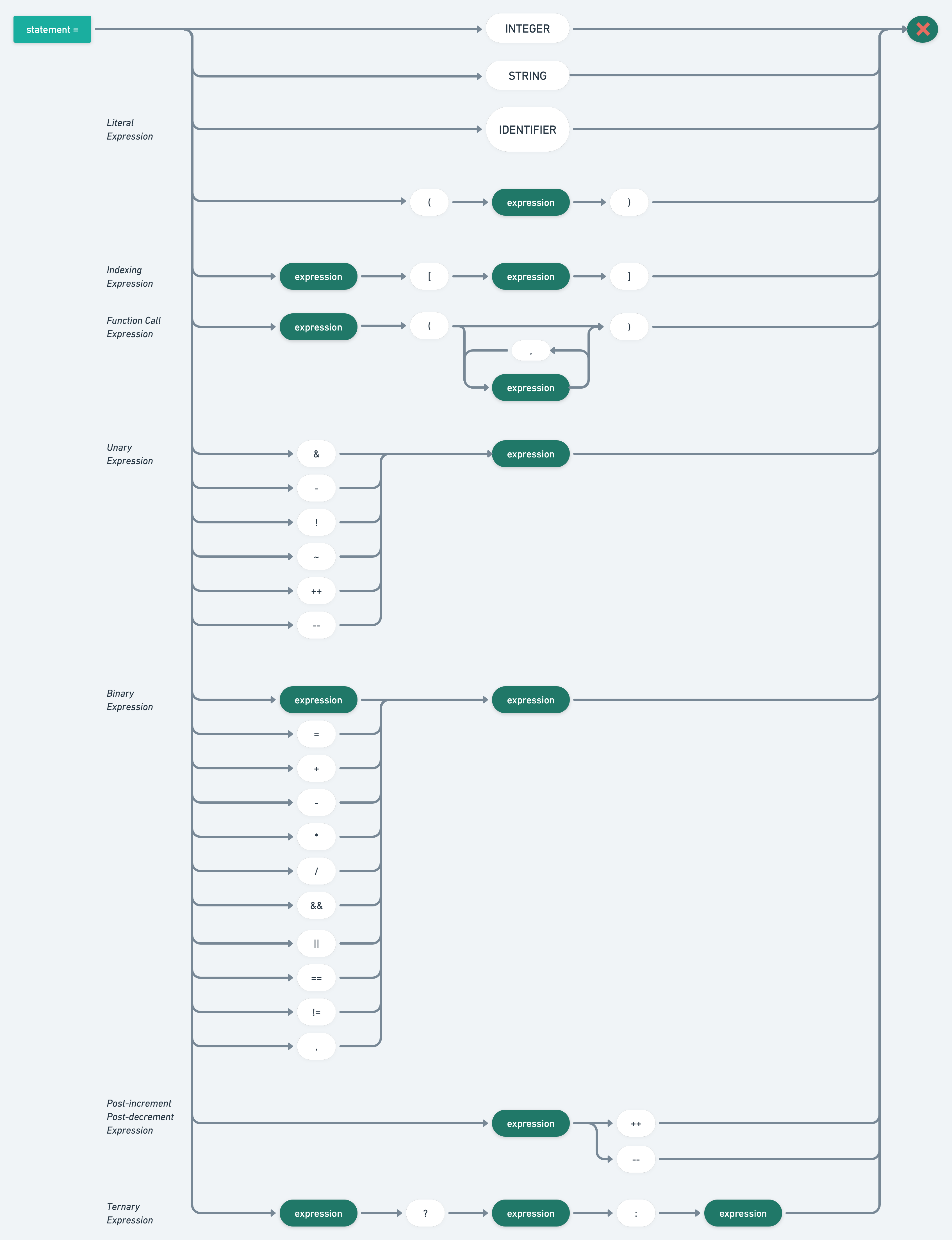
Designing the Grammar for a Compiler
As you embark on the journey of building your own compiler, designing the grammar is one of the most important steps you'll take. The grammar defines the syntax and structure of the programming language your compiler will support and plays a critical role in determining the functionality and usability of your compiler. In this post, we'll walk through the steps of designing the grammar for your compiler, providing examples and tips along the way.
Understanding the Role of Grammar in Compiler Design
Before diving into the process of designing grammar, let's first understand its role in compiler design. In programming languages, grammar defines the syntax rules for the language, including keywords, symbols, and statements. A compiler uses grammar to parse the code, breaking it into a structured form that can be compiled into machine code.
Designing Your Grammar
1. Choose the Appropriate Grammar TypeThe first step in designing your grammar is to choose the appropriate grammar type for your language. Common grammar types include LL(1), LR(1), and LALR(1). The choice of grammar type will depend on the complexity of your language and the requirements of your compiler.
2. Define the SyntaxOnce you've chosen the grammar type, the next step is to define the syntax of your programming language. This includes determining the keywords, symbols, and statements that make up the language. For example, suppose you're designing a language that supports conditional statements. In that case, you'll need to define the syntax for "if" statements, including the syntax for the "if" keyword, the condition, and the code block.
3. Define the RulesOnce you've defined the syntax, the next step is to determine the rules for your grammar. Grammar rules define the relationships between different language constructs and specify how the language should be parsed. For example, a grammar rule might define how to parse an "if" statement, including the order of the keywords, the syntax for the condition, and the syntax for the code block.
4. Handle Ambiguous GrammarOne common challenge in grammar design is handling ambiguous grammar, where a piece of code can be parsed in multiple ways. For example, consider the expression "a + b * c". Depending on the order of operations, this could be parsed as "(a + b) * c" or "a + (b * c)". To handle ambiguous grammar, you'll need to carefully define the rules for your grammar and use tools such as lookahead symbols and precedence levels.
Challenges in Grammar Design
Designing a grammar can be a complex and challenging process, and there are several common challenges that you may encounter. Some of these challenges include ambiguity, parsing complexity, and conflicting rules. To overcome these challenges, it's essential to thoroughly test your grammar and catch errors early on and to use tools and frameworks such as ANTLR and Bison to make the process easier.
Testing and Refining Your Grammar
Once you've designed your grammar, the next step is to test and refine it. This involves using test cases to ensure that your grammar can correctly parse a variety of code constructs and debugging any errors that arise. It's also important to refine your grammar over time based on user feedback and further testing.
In conclusion, designing a grammar for a compiler is a crucial step in the development process. It provides the foundation for the rest of the compiler stages and dramatically impacts the final output. By following the steps outlined in this post, I designed a grammar that meets the requirements of my project and allows for efficient parsing. I am excited to continue building upon this foundation and bring my compiler to completion.
My Grammar
Without divulging much into the specifics, here is how I designed my grammar.
First, I created the main block, which will contain the function and its function declaration recursively.

Then inside the function blocks will include the identifier followed by statements.

Then I designed my statement blocks in a basic form, and this can be further expanded upon based on the incremental approach the compiler design will follow.

Some statements that are part of the initial design are compound statements which are to be enclosed by the { } braces, conditional statements, loop statements, and such. These conditional and loop statements are declared using keywords like "if", "for" and followed by { } where there will be an expression that are to be evaluated.
And lastly, the expression block which is the basic block comprising integers, strings, or identifiers. Then there are also compound expressions that will be called recursively, unary expressions which have one operator and an operand, binary expressions which have two operands or even ternary expressions.

An so simple yet effective grammar can be designed. You can add more principles to it in incremental steps so as to make it more complete. But this much is also useable, and a compiler or interpreter can be designed out of it.